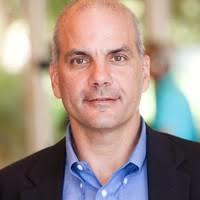By Ray Birch
MILWAUKEE—The U.S. economy is likely to stay on a split path through 2026—steady growth at the top, but persistent financial strain for many households—according to Bill Handel, chief economist at Raddon, a Fiserv company.
Handel said the Federal Reserve’s September rate cut, its first in several years, was “one of the most telegraphed moves ever,” driven in part by pressure from the Trump Administration to ease monetary policy. But he cautioned that uncertainty remains about whether the Fed will cut again in its final two meetings of 2025.
“Fed officials are divided,” Handel noted, adding that while short-term rates have fallen, longer-term yields have been far more stable—leaving the yield curve still inverted, though slowly moving toward normalcy.
A ‘Tale Of Two Economies’
Handel described the broader economic landscape as a “tale of two economies.” Corporate profits and stock valuations remain robust, buoying overall GDP growth—estimated around 3% to 4% for 2025—but many working households continue to struggle with higher costs and stagnant real wages.
“Large corporations prepared for a downturn years ago, so they’re well positioned,” he said. “But people without assets or savings—those living paycheck to paycheck—are feeling real pain. That divide is going to persist into 2026.”
Handel expects the economy to slow modestly but not tip into recession next year.
“If a recession does come, it’s more likely to appear in the second half of 2026,” he said.
Handel warned that credit unions will continue to feel stress in their loan portfolios, particularly autos and credit cards, where delinquency rates are already comparable to levels last seen during the 2008–09 financial crisis.
“Those pressures aren’t going away anytime soon,” he said. “Delinquencies are going to stay elevated as household budgets remain tight.”
The housing market, once a source of strength, is also cooling. Even previously resilient regions in the Midwest and Northeast are now showing signs of softening.
“For the first time in years, we’re seeing year-over-year declines in national home prices,” Handel said.
Still, he sees opportunity amid the slowdown. As consumers adjust to the reality that mortgage rates won’t return to 3%, some first-time buyers—particularly older Gen Zers and younger Millennials—could re-enter the purchase market.
“Credit unions should be ready to meet that demand,” he said.
Shutdown Drama And Political Noise
Asked about the government shutdown and mass federal layoff threats, Handel dismissed most of it as “political theater.” He expects the disruption to be short-lived and the economic impact limited.
“It’s useful for both parties, but it’s not a serious economic event,” he said. “Most federal workers will likely get back pay.”
Handel urged credit unions to focus on disciplined risk management while preparing for selective growth opportunities:
Manage risk in auto and credit card portfolios, where delinquencies are highest
Watch for mortgage lending opportunities as younger buyers return to the market
Keep an eye on home-equity lending, which remains an attractive niche as property values plateau but remain high relative to incomes
“The next 18 months are going to test credit unions’ ability to balance risk with opportunity,” Handel concluded. “It’s not a crisis—but it’s definitely a time to stay sharp and strategic.”
Section: Standard
Word Count: 755
Copyright Holder: CUToday.info
Copyright Year: 2025
Is Based On:
URL: https://www.cutoday.info/THE-feature/Credit-Unions-Should-Brace-For-Two-Track-Economy-Through-2026

